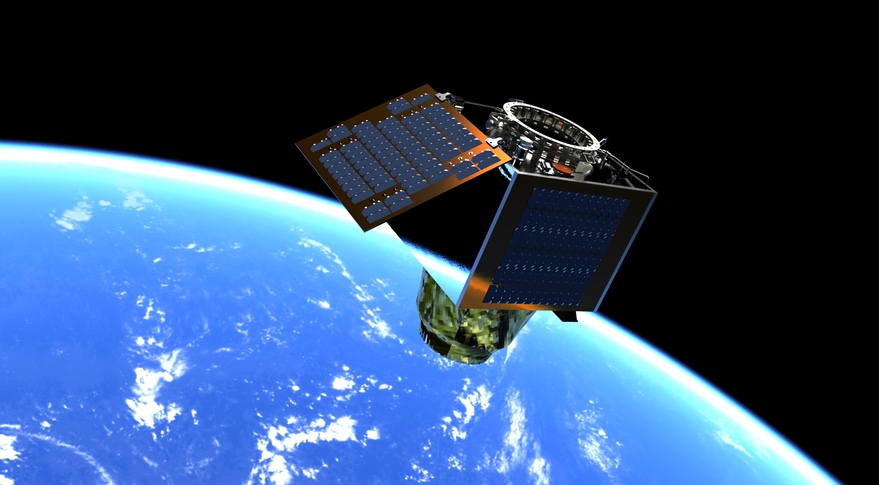PARIS — Surrey Satellite Technology Ltd. (SSTL) won a contract from British Earth observation startup Satellite Vu to build the first satellite in a constellation designed to provide thermal infrared imaging for climate change applications.
SSTL said Dec. 16 that it will build the satellite as a pathfinder for Satellite Vu’s proposed seven-satellite constellation. The spacecraft will be built for launch in the fourth quarter of 2022. The companies did not disclose the terms of the deal.
The satellite is based on SSTL’s DarkCarb design, a 130-kilogram satellite equipped with a mid-wave infrared, or MWIR, instrument capable of imagery with a resolution of 3.5 meters. That instrument is currently being tested on aircraft to confirm its performance ahead of launch.
“They say space is hard. Infrared is hard, that’s why it hasn’t been implemented, certainly not at 3.5-meter resolution,” said Anthony Baker, chief executive of Satellite Vu, during a panel at Euroconsult’s World Satellite Business Week here Dec. 16. “The breakthroughs have been on the camera, the sensor, the way we image.”
London-based Satellite Vu intends to use the thermal infrared imagery to support energy and environmental applications, such as identifying emissions sources and buildings that are wasting heat. The data can be used to support commitments by companies to achieve environmental standards, such as “net zero” emissions goals.
“Everyone who declares net zero has the same problem: they don’t know what their carbon footprint is today, they don’t know where to spend their first euros to make things better, and did that improvement actually make any difference over the long term? We can tell you the answer,” said Baker.
Satellite Vu raised £15 million ($20 million) in October in a funding round led by the Seraphim Space Investment Trust, six months after it raised £3.6 million. That funding will support the production of the first satellite.
Baker said his company elected to buy a satellite from an established manufacturer like SSTL than build one itself. “We could have built this in our garage like a lot of startups but we decided to go to someone professional who can build something that will work the first time,” he said. “It’s not so much a technology demonstrator, because we think that risk has been completely retired. It’s more of a market demonstrator.”
He said the company will go ahead with the other six satellites in the constellation “as soon as possible.” Those satellites will be ordered separately next year. Satellite Vu will place the satellites into two planes to maximize revisit times. The company didn’t disclose a schedule for launching those satellites.
